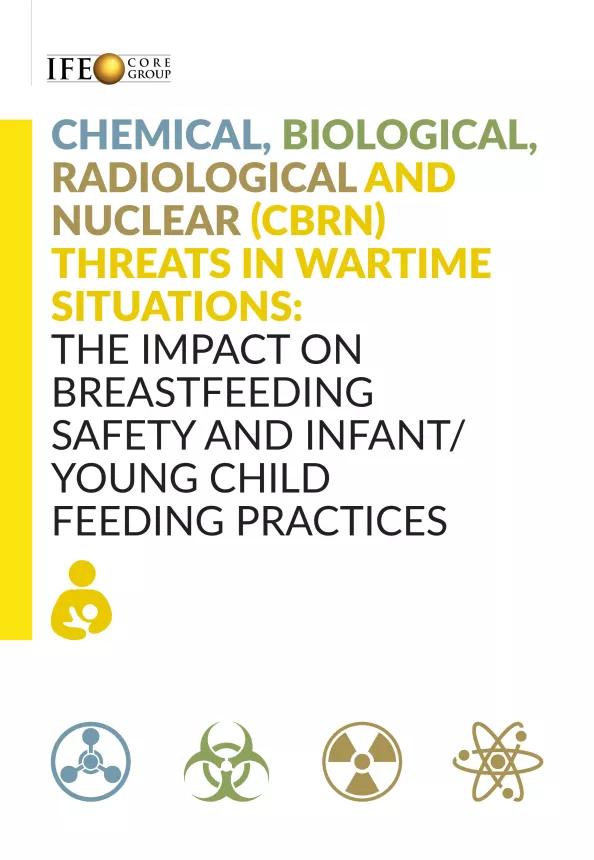Chemical, biological, radiological and nuclear (CBRN) threats in wartime situations: The impact on breastfeeding safety and infant/ young child feeding practices
Publication details
In today’s modern warfare, there is an increased risk of chemical, biological, radiological, and nuclear weapons use and of nuclear emergencies due to damage to existing nuclear power plants. Most international agencies and ministries of health have guidelines for the general population about what to do in the event of a Chemical, Biological, Radiological and Nuclear (CBRN) emergency.
However, an urgent gap exists in guidance specifically for the breastfeeding population - there is no one place where agencies or individuals can go to access vital information about the safety of breastfeeding in CBRN crises. The Infant Feeding in Emergencies (IFE) Core Group has taken up the initiative, along with the Johns Hopkins Center for Humanitarian Health to create guidelines for the breastfeeding population in the context of the most common chemical and biological agents along with guidance for the first three days after a nuclear power plant emergency. It is intended for policymakers, healthcare workers and emergency planners in the case of CBRN emergencies to optimally support infants and young children.
This guidance should be used in conjunction with existing guidance for the general public, healthcare workers and policy makers. The guidance reflects our collective knowledge and draws on expertise from relevant fields. We acknowledge that this guidance will evolve over time as more information becomes available and we welcome suggestions for improvement to ife@ennonline.net.
Acknowledgements
The guidance notes were created by the Infant and Young Child Feeding in Emergencies (IFE) Core Group in collaboration with Johns Hopkins University Center for Humanitarian Health. The development and writing of the chemical and biological guidance was led by Sharon Leslie, co-written by Mija Ververs and Jodine Chase with support from the members of the IFE Core Group Sub-Working Group on IYCF-E in the context of CBRN threats. The development and writing of the radiological/nuclear guidance was led by Eilise Brennan, co-written by Mija Ververs, Jodine Chase, and Sharon Leslie with support from the members of the IFE Core Group Sub-Working Group on IYCF-E in the context of CBRN threats: Maryse Arendt IBCLC BSEd, Brooke Bauer, MPH, Eilise Brennan, Msc, Jodine Chase, Kirrily De Polnay, MBBS, Veronica Garea, PhD, Karleen Gribble, BRurSc PhD, Hiroko Hongo, MSW, PhD, IBCLC, Sharon Leslie, PT DPT MPH, Mija Ververs, MMed MPH RD, Nicki Connell MBE.
We gratefully acknowledge the timely feedback and input from expert reviewers including those at the World Health Organization, US Centers for Disease Control and Prevention, International Atomic Energy Agency, US Food and Drug Administration and Johns Hopkins University Bloomberg School of Public Health. Additional support in the Chemical Section was provided by James Madsen, MD, MPH Medical Toxicologist, (Former Lead Clinical Consultant and Clinical Laboratory Director, USAMRICD; Adjunct Assistant Instructional Professor, University of Florida) and Andrew Stolbach, MD, MPH Medical Toxicologist, (Associate Professor of Emergency Medicine, Johns Hopkins Medicine). Andrew Stolbach and Gigi Gronvall, PhD (Senior Scholar, Associate Professor, Johns Hopkins Center for Health Security) contributed to the Biological Section.

